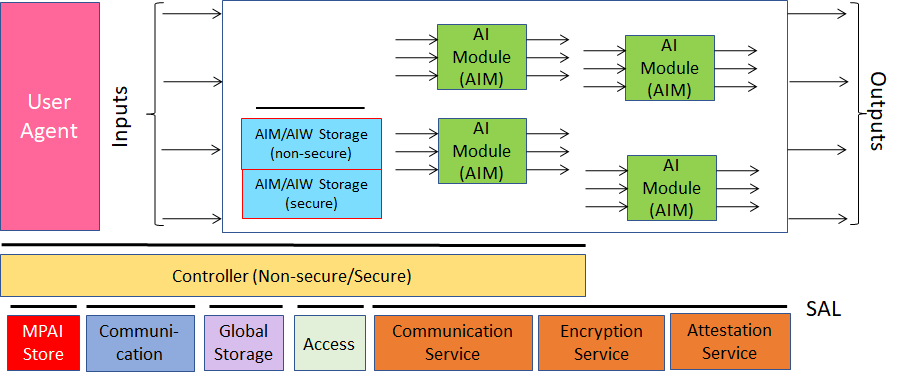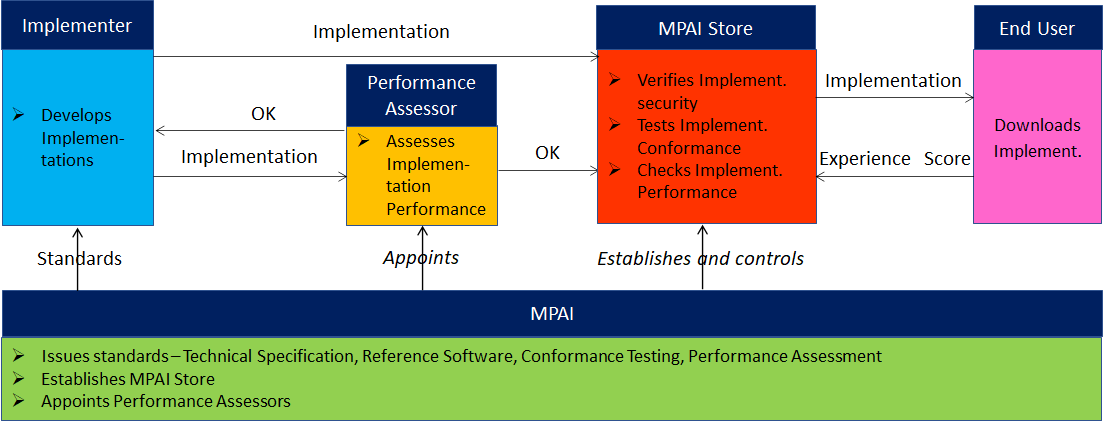The international, unaffiliated, non-profit Moving Picture, Audio, and Data Coding by Artificial Intelligence (MPAI) organisation has been established in September 202i in the context of:
- Increasing use of Artificial Intelligence (AI) technologies to a broad range of applications that have affected the life of millions of people and are expected to do so even more in the future.
- The marginal use of standards in the development of those AI applications.
- Most of what has happened in the AI domain has not been affected by standards.
- The enormous and positive impact that standards have exerted on the digital media industry and billions of people,.
MPAI believes that AI-based data coding standards will have a similar positive impact on the Information and Communication Technology industry and has designed the organisation to develop AI-based Data Coding standards in pursuit of the following policies:
- Publish from the start clear Intellectual Property Rights licensing frameworks.
- Comply with a rigorous MPAI Standard Development Process.
- Be friendly to the AI context but, to the extent possible, remain agnostic to the technology and allow that developers select the more appropriate – AI or Data Processing – for their implementations.
- Be attractive to different industries, end users, and regulators.
- Address five standardisation areas:
- Data Type, a particular type of MPAI-specified Data, e.g., Audio, Visual, Object, Scenes, and Descriptors with as clear semantics as possible.
- Qualifier, specialised Metadata conveying information on a Data Type’s Sub-Type, Format, and Attributes of a Data Type.
- AI Module (AIM), MPAI-specified processing elements with identified functions and input/output Data.
- AI Workflow (AIW), MPAI-specified configurations of AIMs with identified functions and input/output Data.
- AI Framework (AIF), an environment enabling dynamic configuration, initialisation, and control of AIWs.
- Provide appropriate Governance of the ecosystem created by MPAI Technical Specifications enabling users to:
-
- Operate Reference Software Implementations of MPAI Technical Specifications attached to Reference Software Specifications
- Test the conformance of an implementation with a Technical Specification based on the Conformance Testing Specification.
- Assess the performance of an implementation of a Technical Specification based on the Performance Assessment Specification.
- Get conforming implementations possibly with a performance assessment report from a trusted source through the MPAI Store.
The accomplishment of the MPAI mission is facilitated by two foundational Technical Specifications:
- Technical Specification: Artificial Intelligence Framework (MPAI-AIF) specifying an environment enabling initialisation, dynamic configuration, and control of AIWs in the standard AI Framework environment depicted in Figure 1. An AI Framework can execute AI applications called AI Workflows (AIW). An AIW can include interconnected AI Modules (AIM). MPAI-AIF supports small- and large-scale high-performance components and promotes solution with improved explainability.

Figure 1 – The AI Framework (MPAI-AIF) V2 Reference Model
- Technical Specification: Governance of the MPAI Ecosystem defining the following elements:
- Standards, i.e., the ensemble of Technical Specifications, Reference Software, Conformance Testing, and Performance Assessment.
- Implementers of MPAI Technical Specifications.
- MPAI Store in charge of making AIMs and AIWs submitted by Implementers available to Integrators and End-Users.
- Performance Assessors, independent entities assessing the performance of implementations in terms of Reliability, Replicability, Robustness, and Fairness.
- End Users.


